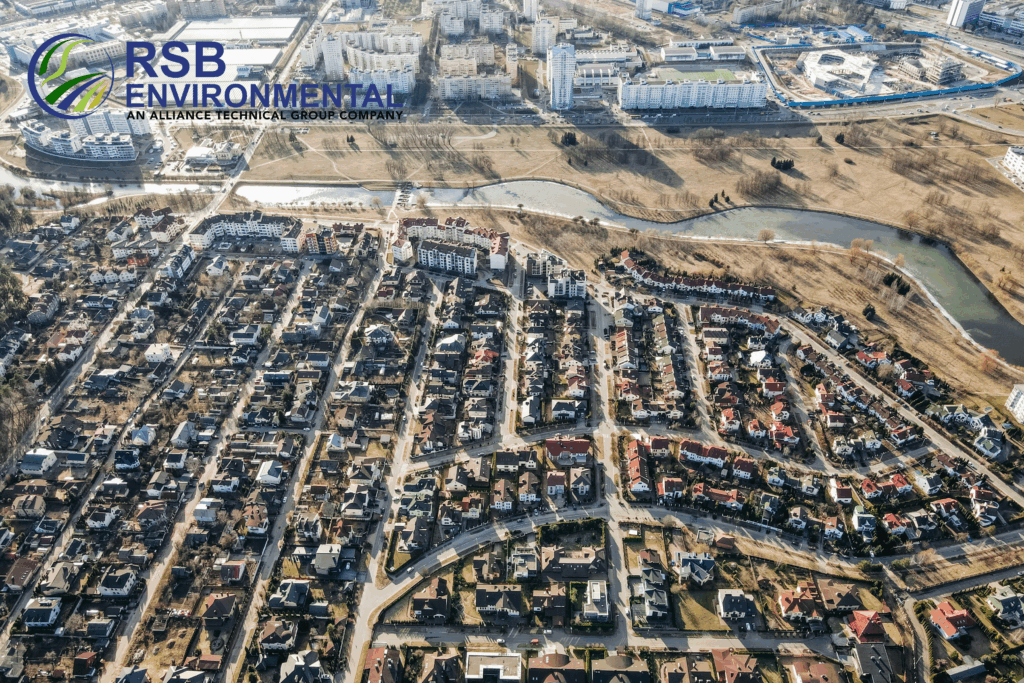Phase 1 ESA and Zoning Laws: What Developers Need to Consider
Zoning and environmental due diligence go hand in hand. When planning a development, especially in previously industrial or commercial areas, a Phase I ESA is not just a regulatory formality—it’s a powerful tool in assessing environmental condition, guiding entitlement approvals, and limiting future liability. Understanding how Phase 1 ESA zoning concerns relate to local land use laws is essential for any Urban Planning & Entitlements Consultant at the awareness stage.
Whether a site involves former gas stations, storage tanks, or industrial operations, aligning ESA findings with zoning classifications helps developers navigate environmental requirements, secure lender confidence, and unlock the site’s full potential.
How Zoning Impacts Phase I ESA Scope and Strategy
Zoning classifications influence the types of land use permitted and, in turn, shape the scope of environmental assessments. A Phase I ESA completed in accordance with ASTM standards evaluates a property’s environmental history and current condition to identify Recognized Environmental Conditions (RECs)—potential risks that may affect site development or real estate transactions.
Examples:
- Gas station sites often require investigation of petroleum products, underground storage tanks, and potential contaminants in soil or groundwater.
- Changing zoning from industrial to residential raises the bar, requiring greater scrutiny of former operations, possible chemical materials used, and nearby buildings.
Zoning designations help environmental professionals determine where to take samples, what to review during site inspections, and which regulatory bodies or lenders might have additional requirements.
ESA Disclosure as Part of the Zoning and Due Diligence Process
In many jurisdictions, environmental assessments are a formal part of zoning and entitlement applications. Municipal landowners or developers may need to share ESA findings to obtain planning board approval, especially for rezoning or special use permits.
- If RECs or the presence of hazardous materials are identified, a Phase II ESA may be recommended.
- Environmental interviews, historical records, and aerial imagery are reviewed to assess risk.
- Local and state agencies may ask for mitigation plans if contaminants are present.
By being transparent about environmental information, developers reduce risk and build trust with lenders, investors, and city planning departments—especially in sensitive real estate transactions.
How ESA Data Supports Smart Zoning and Development
A well-executed Phase I ESA provides insight that informs:
- Site layout and infrastructure design
- Zoning amendments and entitlement strategy
- Budget planning for environmental remediation
- Risk management during real estate transactions or investments
For example:
A developer planning mixed-use buildings on a former gas station property may discover residual contamination in the soil or water. Using ESA data, the team can shift residential units to a cleaner section of the lot and incorporate mitigation steps during development.
Lender and Investor Considerations
Lenders require clean environmental documentation before approving financing for real estate transactions. ESA reports that show unresolved RECs or the presence of hazardous materials can halt funding or delay closings. This makes early environmental review a key step in the due diligence process for any project—especially those involving zoning changes.
Frequently Asked Questions (FAQ) Phase 1 ESA and Zoning Laws
How does zoning impact the Phase I ESA process?
Zoning helps define the property’s historic and future land use, which influences what environmental risks professionals should investigate and what standards the assessment must follow.
What are RECs, and how do they affect zoning and approvals?
Recognized Environmental Conditions (RECs) indicate potential contamination. Their presence may require cleanup, affect entitlement timelines, or change the site’s allowable use under zoning laws.
Are ESA findings required in zoning applications?
In many cases, yes. Especially when rezoning from commercial/industrial to residential, agencies may request ESA documentation to ensure the environment is safe for future occupants.
Can ESA reports affect loan or lender approval?
Absolutely. Lenders often won’t approve funding unless a current Phase I ESA, free of unresolved RECs or liability risks, is provided as part of the real estate transaction.
Who conducts a Phase I ESA, and what’s included?
Certified environmental professionals conduct the ESA, including a site inspection, interviews, review of regulatory information, and analysis of past land uses, with a focus on identifying any contaminants, storage tanks, or signs of petroleum product releases.
Secure Smarter Zoning with RSB Environmental
At RSB Environmental, we help your development team align zoning strategies with environmental best practices. Our Phase I ESA reports provide the data, documentation, and insights necessary for confident land-use planning, entitlement applications, and real estate investments. Whether you’re rezoning a former gas station or planning new buildings on industrial land, we ensure your due diligence process is thorough, compliant, and effective.
👉 Contact RSB Environmental today at info@rsbenv.com to schedule a Phase I ESA or speak with our experts about zoning-compliant environmental solutions for your next development.




